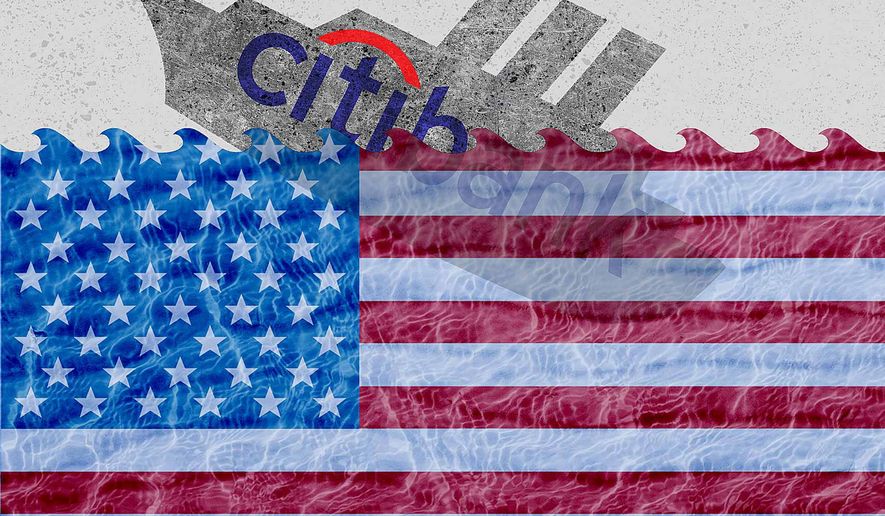OPINION:
In the New Year, former Comptroller of the Currency John Dugan will take the reins as Citi’s chairman. The appointment underscores regulators’ outsized role in the banking industry and to Citi in particular. In “Borrowed Time: Two Centuries of Booms and Busts at Citi,” Wall Street Journal assistant editor James Freeman and George Washington visiting law professor Vern McKinley vividly recount its story as a political bank intertwined with and dependent on the state for much of its history.
Over the last century, storied Citi has repeatedly been at death’s door and bailed out by the government, most recently during the financial crisis. It was not, however, always thus.
For 80 years it was a financial Rock of Gibraltar, starting in the 1830s when America’s richest man, John Jacob Astor, rescued the struggling bank. His protege, Moses Taylor, became a director and then the bank’s president. In the 19th century depositors weren’t insured by the government. During crises they flocked to Citi, which was a safe haven. During the panics of 1857, 1873 and 1884, its deposits surged 42 percent, 32 percent and 70 percent, respectively. In the 19th century, it even bailed out the government.
The storied bank has long had a cozy relationship with government. There’s been a revolving door between the bank and the Treasury Department. Citi President James Stillman recruited Frank Vanderslip from Treasury. Vanderslip succeeded Stillman. He was one of the principal behind-the-scenes architects of the Federal Reserve System. Vanderslip’s reign also marked the beginning of Citi’s transformation from a self-reliant institution with a fortress balance sheet to a political bank and serial bailouts.
In the 21st century, Citi’s interest in Washington talent and influence remains keen. In 2009, it recruited President Clinton’s Treasury Secretary Bob Rubin to a senior advisory role for which he was paid $115 million. Mr. Rubin was instrumental in Tim Geithner’s selection to head the New York Fed, where he advocated bailouts. In 2013, Citi executive and former NYU administrator Jack Lew became President Obama’s Treasury secretary.
The composition of Citi’s board is telling. America’s most political bank’s board has five former regulators, one of whom was Mexico’s president, one former regulatory consultant, a former president and COO of GSE Freddie Mac, one former NYC Planning Commission member and a former economic adviser to Mr. Obama’s presidential campaign.
Private failures strengthen the banking system continuously and dynamically reallocating capital and talent from underperforming and failed models and management to more resilient firms delivering better value to consumers and businesses, making the system less fragile. Banks whose management, shareholders and depositors know they won’t be bailed out, are less likely to need to be bailed out.
Since the Fed’s 1913 creation, Citi has been the quintessential too-big-to-fail bank. In 1920 during James Grant’s “The Forgotten Depression,” it borrowed more from the N.Y. Fed than it had in shareholder capital.
President George H.W. Bush’s Treasury secretary, Nicolas Brady, rescued Citi’s beleaguered Latin American loan portfolio with Brady bonds.
In 2007, Citi Chairman Sandy Weill tried, unsuccessfully, to hire Mr. Geithner to replace CEO Chuck Prince. During and after the financial crisis, Mr. Geithner advocated for Citi’s bailout.
During the crisis, notional defender of free-market capitalism President George W. Bush instructed Treasury Secretary Hank Paulson to save Citi. Lo, it received more bailout money than any other bank, more than half a trillion in equity capital, loans and asset guarantees.
Messrs. Freeman and McKinley criticize Mr. Dugan’s OCC’s oversight of Citi in the run-up to the financial crisis. They note while Mr. Dugan warned about “reckless lending practices in residential and commercial real estate,” that there’s no evidence he took “concrete action to reform Citi or protect taxpayers.”
Former FDIC Chairman Sheila Bair wrote that “virtually no meaningful supervisory measures had been taken against Citi by either the Comptroller or the New York Fed, adding “A smaller bank with those types of problems would have been subject to a supervisory order to take immediate corrective action” and “put on the troubled-bank list.”
Instead, the N.Y. Fed and comptroller’s office “stood by as the sick bank continued to pay major dividends and pretended that it was healthy.” Messrs. Freeman and McKinley lament “Not for the first time in its history, the megabank and its regulators would work together to ensure that the public did not learn the extent of Citi’s problems.”
Citi didn’t create America’s politicized and hyper-regulated banking system. It has, however, energetically participated in it and over the years cultivated Washington as assiduously as any bank in the land. Messrs. Freeman and McKinley would like to see gradual removal of banks’ government safety net. In a world with neither government bank bailouts nor opportunities and incentives for regulatory capture, a self-correcting banking system and iconic Citi would perform better and be more resilient.
• Eric Grover is the principal at Intrepid Ventures.




Please read our comment policy before commenting.